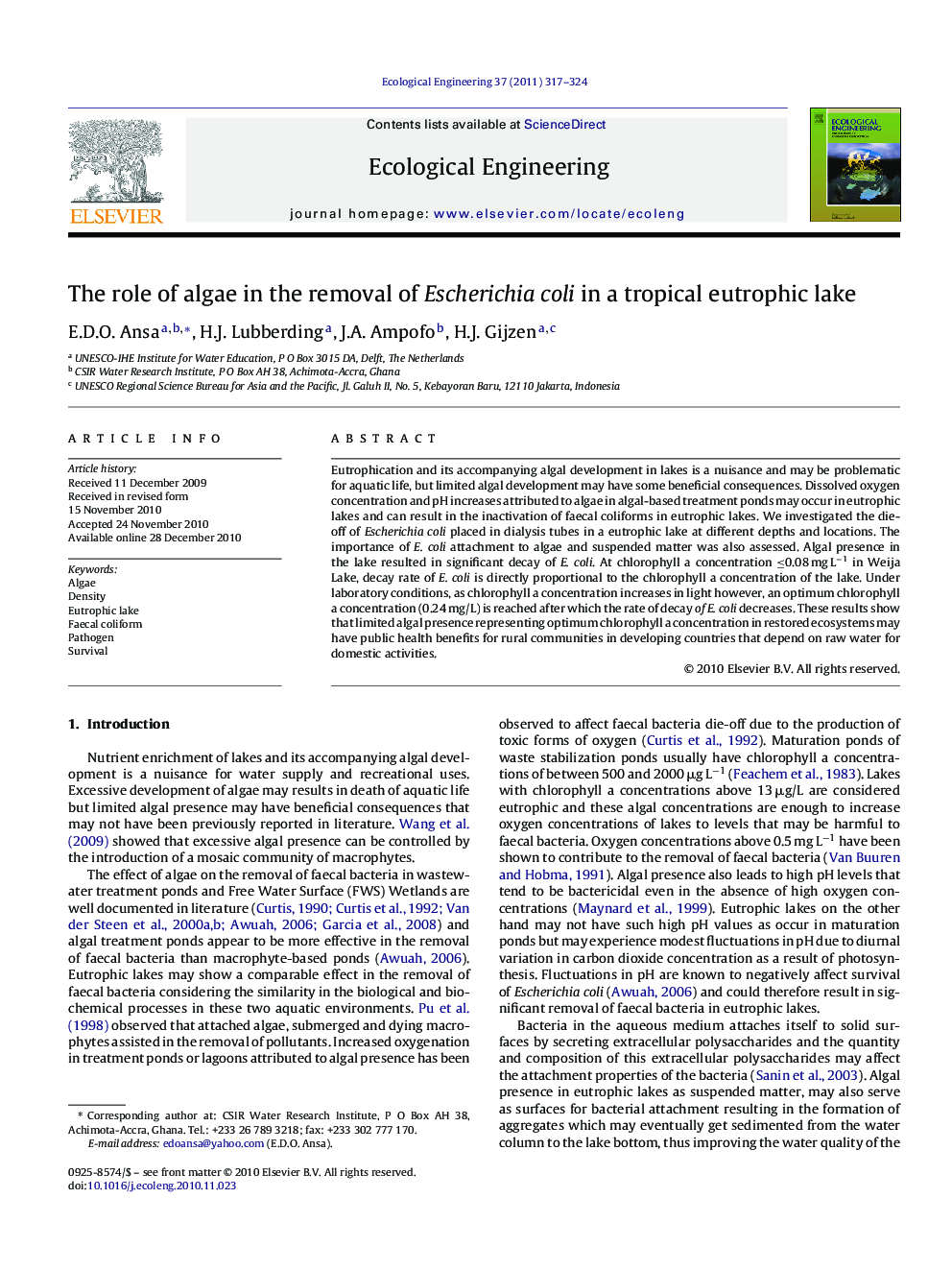| Article ID | Journal | Published Year | Pages | File Type |
|---|---|---|---|---|
| 6302860 | Ecological Engineering | 2011 | 8 Pages |
Abstract
Eutrophication and its accompanying algal development in lakes is a nuisance and may be problematic for aquatic life, but limited algal development may have some beneficial consequences. Dissolved oxygen concentration and pH increases attributed to algae in algal-based treatment ponds may occur in eutrophic lakes and can result in the inactivation of faecal coliforms in eutrophic lakes. We investigated the die-off of Escherichia coli placed in dialysis tubes in a eutrophic lake at different depths and locations. The importance of E. coli attachment to algae and suspended matter was also assessed. Algal presence in the lake resulted in significant decay of E. coli. At chlorophyll a concentration â¤0.08 mg Lâ1 in Weija Lake, decay rate of E. coli is directly proportional to the chlorophyll a concentration of the lake. Under laboratory conditions, as chlorophyll a concentration increases in light however, an optimum chlorophyll a concentration (0.24 mg/L) is reached after which the rate of decay of E. coli decreases. These results show that limited algal presence representing optimum chlorophyll a concentration in restored ecosystems may have public health benefits for rural communities in developing countries that depend on raw water for domestic activities.
Related Topics
Life Sciences
Agricultural and Biological Sciences
Ecology, Evolution, Behavior and Systematics
Authors
E.D.O. Ansa, H.J. Lubberding, J.A. Ampofo, H.J. Gijzen,
